Iron is a vital mineral that our bodies need to function properly. It plays a crucial role in carrying oxygen to our muscles and tissues, and in supporting energy production. Including iron-rich foods in your diet is essential for maintaining good health and preventing conditions like anemia.
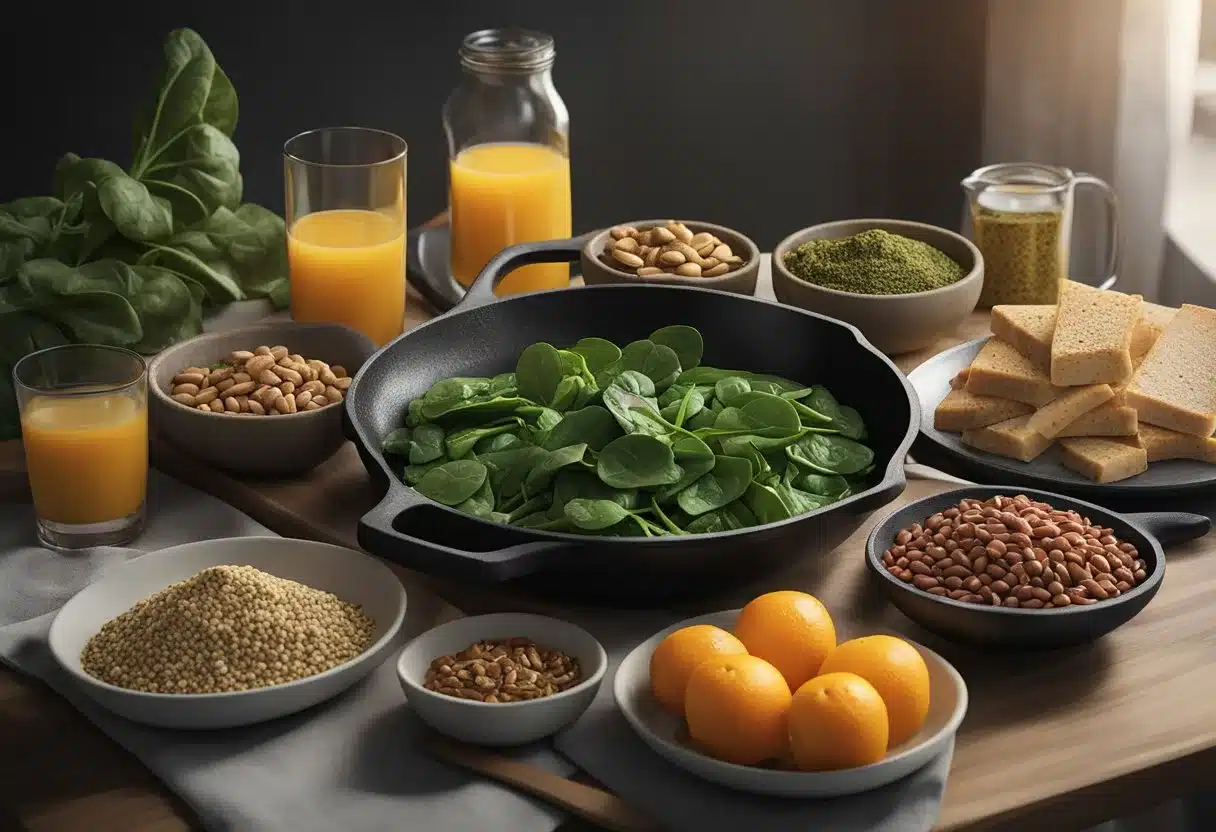
Foods high in iron can be found in various categories, including meats, fish, beans, and leafy greens. For example, red meat and liver are excellent sources of heme iron, which is easily absorbed by the body. On the other hand, plant-based foods like spinach and lentils contain non-heme iron, which can be paired with vitamin C to enhance absorption.
Eating a balanced diet that includes a variety of iron-rich foods is important for everyone, but especially for certain groups like women, children, and athletes who may need more iron. By understanding the best sources of iron and how to incorporate them into meals, individuals can better manage their dietary needs and overall health.
Key Takeaways
- Iron is essential for oxygen transport and energy production.
- Heme and non-heme iron come from different food sources.
- Pairing iron-rich foods with vitamin C can improve iron absorption.
Understanding Iron in the Diet
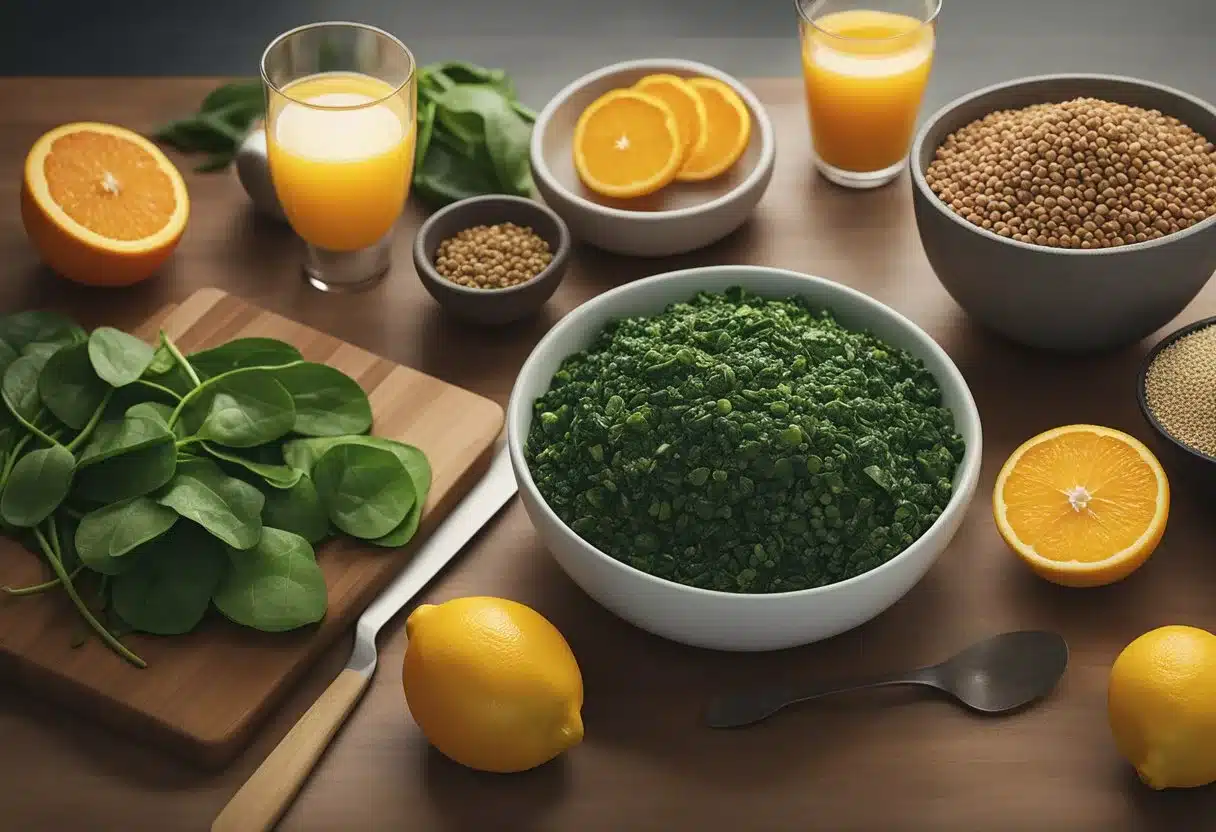
Iron is essential for various functions in the body, including the production of hemoglobin and red blood cells. This section explains different types of iron, daily requirements, its roles, and factors that affect absorption.
Heme Iron vs Non-Heme Iron
Iron is available in two forms: heme iron and non-heme iron. Heme iron comes from animal sources like chicken, fish, and liver. Non-heme iron is found in plant foods such as beans, lentils, and spinach. Heme iron is absorbed more efficiently by the body than non-heme iron. For example, including lean meats and seafood in the diet can help increase iron intake.
Daily Iron Requirements
Daily iron needs vary by age and gender. Adult men typically need 8 mg per day. Women aged 19-50 need 18 mg due to menstruation. After menopause, their requirement drops to 8 mg. Pregnant women require 27 mg daily. The United States Department of Agriculture provides a useful database to check the iron content of various foods.
Role of Iron in the Body
Iron is crucial for transporting oxygen in the blood. It helps produce hemoglobin, the protein in red blood cells that carries oxygen. Iron also supports metabolism and is necessary for growth and development. A deficiency can lead to anemia, causing fatigue and weakness. Including iron-rich foods like dark leafy greens and fortified cereals can help maintain proper levels.
Iron Absorption Factors
Several factors influence iron absorption. Vitamin C enhances non-heme iron absorption, so eating foods like tomatoes, greens, or citrus fruits with iron-rich meals can be beneficial. On the other hand, calcium can inhibit iron absorption. It’s important to balance nutrient intake to ensure efficient iron absorption. Pairing legumes with foods high in vitamin C can maximize iron uptake.
Iron Deficiency and Its Impact
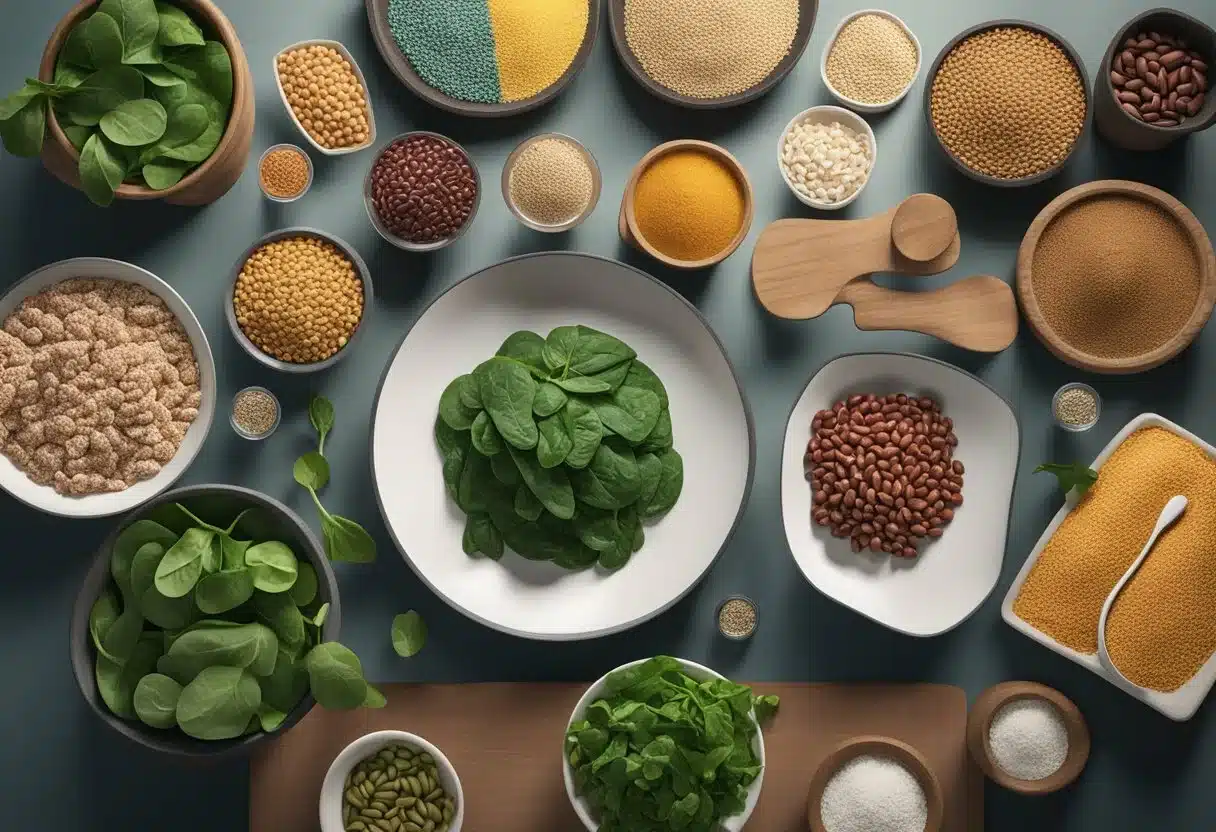
Iron deficiency is a significant health issue that affects many people worldwide. It can lead to serious health problems if untreated, making it crucial to recognize the signs, understand who is at risk, and know the potential long-term health consequences.
Signs and Symptoms of Iron Deficiency
Iron deficiency can cause a variety of symptoms. Fatigue is one of the most common, as iron is essential for producing hemoglobin, which carries oxygen in the blood. People with low iron may also experience weakness, dizziness, and headaches.
Another sign is pale skin, which occurs because of reduced red blood cells and hemoglobin. Some individuals may notice shortness of breath and cold hands and feet. Severe iron deficiency can lead to iron deficiency anemia, which intensifies these symptoms and can significantly impact daily life. If any of these symptoms occur, it is important to consult a doctor.
Populations at Risk for Iron Deficiency
Certain groups are more at risk for iron deficiency. Pregnant women are particularly prone due to the increased iron demands of both the mother and the growing fetus. Breastfeeding women also need more iron to support milk production.
Infants and young children can be at risk because they require iron for growth and development. Additionally, women of childbearing age may experience iron deficiency due to blood loss from menstruation. According to the National Institutes of Health, some older adults might not consume enough iron through their diet, making them susceptible as well.
Long-Term Health Consequences
Long-term iron deficiency can lead to severe health issues. Chronic iron deficiency may result in iron deficiency anemia, which affects oxygen delivery to organs and tissues, leading to chronic fatigue and weakness. Over time, this can impair cognitive and physical functions.
In children, prolonged iron deficiency can affect growth and development, potentially causing developmental delays and behavioral issues. Adults may experience decreased work capacity and immune function, making them more prone to illnesses. It’s essential to address iron deficiency early to avoid these long-term effects. Regular check-ups with a doctor can help manage and prevent severe health outcomes.
For more on symptoms, visit the Mayo Clinic.
Iron-Rich Foods
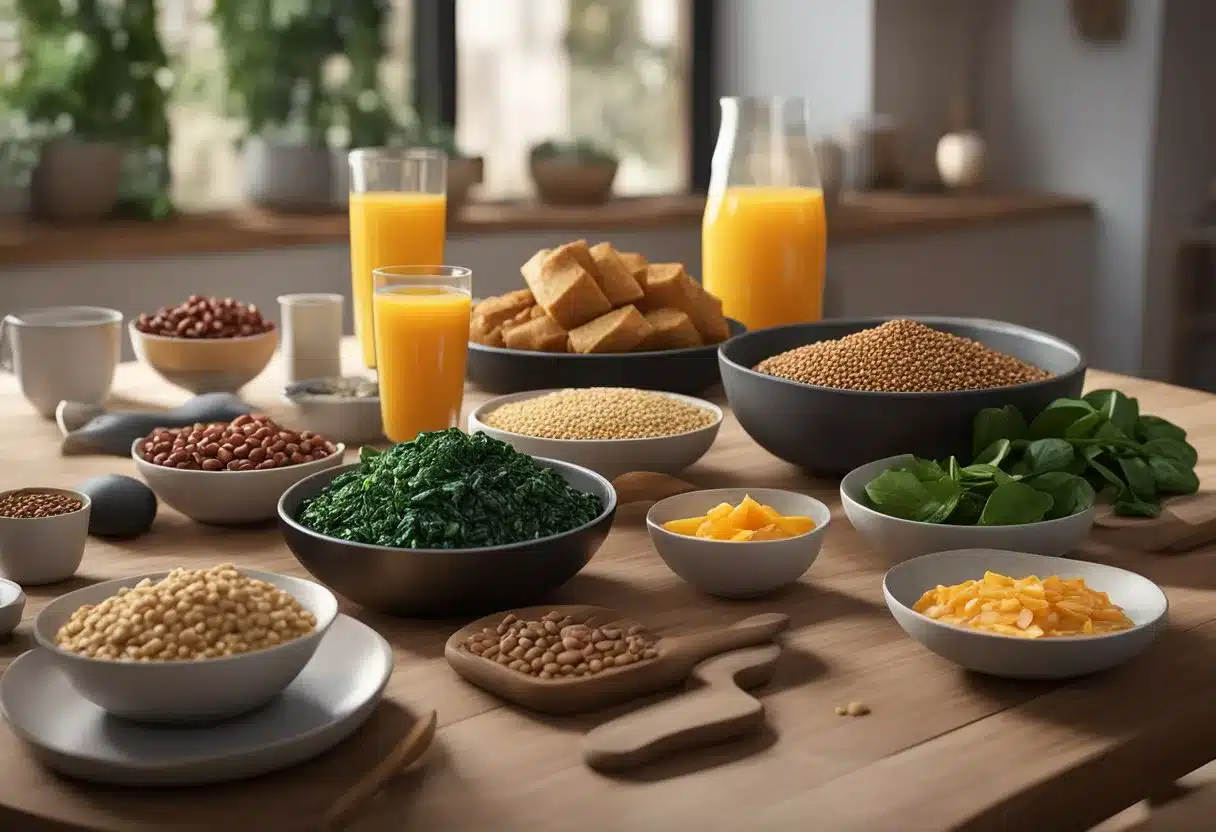
Iron is a crucial nutrient that helps the body produce red blood cells. Various foods, including meat, seafood, and plant-based options, can help maintain adequate iron levels. Here are some key sources of iron.
Meat and Poultry
Lean meats, such as beef and lamb, are excellent sources of heme iron, which is easily absorbed by the body. Beef liver contains the highest amount of iron. A 3-ounce serving of beef liver provides about 5 mg of iron.
Chicken and turkey also contain heme iron. A 3-ounce serving of roasted turkey provides about 1.4 mg of iron. For those who prefer chicken, a 3-ounce serving of roasted chicken breast has approximately 0.9 mg of iron.
Including a variety of meat and poultry in the diet ensures a good intake of this essential nutrient.
Seafood
Seafood is another potent source of heme iron. Clams are particularly rich in iron, with a 3.5-ounce serving containing up to 29.45 mg of iron. This makes clams one of the best options for boosting iron levels.
Oysters and mussels also offer substantial amounts of iron. A 3-ounce serving of oysters provides about 8 mg of iron. Fish like sardines and mackerel contain lower but still significant amounts of iron.
Regular consumption of seafood can help maintain sufficient iron levels in the body.
Vegetarian Sources
Plant-based sources of iron include beans, lentils, and dark leafy greens. Unlike heme iron, non-heme iron found in plants is less readily absorbed by the body. To increase absorption, pair these foods with vitamin C-rich items like tomatoes or citrus fruits.
A cup of cooked lentils provides about 6.6 mg of iron. Spinach is another good option, with a cup of cooked spinach offering around 6.4 mg of iron. Other vegetables rich in iron include kale, collard greens, and Swiss chard.
For vegetarians, combining different plant-based iron sources can help meet daily requirements.
Fortified Foods
Many processed foods are fortified with iron to help people meet their daily needs. Breakfast cereals often have added iron; some provide 100% of the daily value in a single serving. Checking the nutritional labels can help identify these products.
Fortified bread, pasta, and rice are other common sources of added iron. These foods are especially helpful for those who may not consume sufficient iron from natural sources.
Including fortified foods in the diet can be a convenient way to boost iron intake.
Enhancing Iron Intake
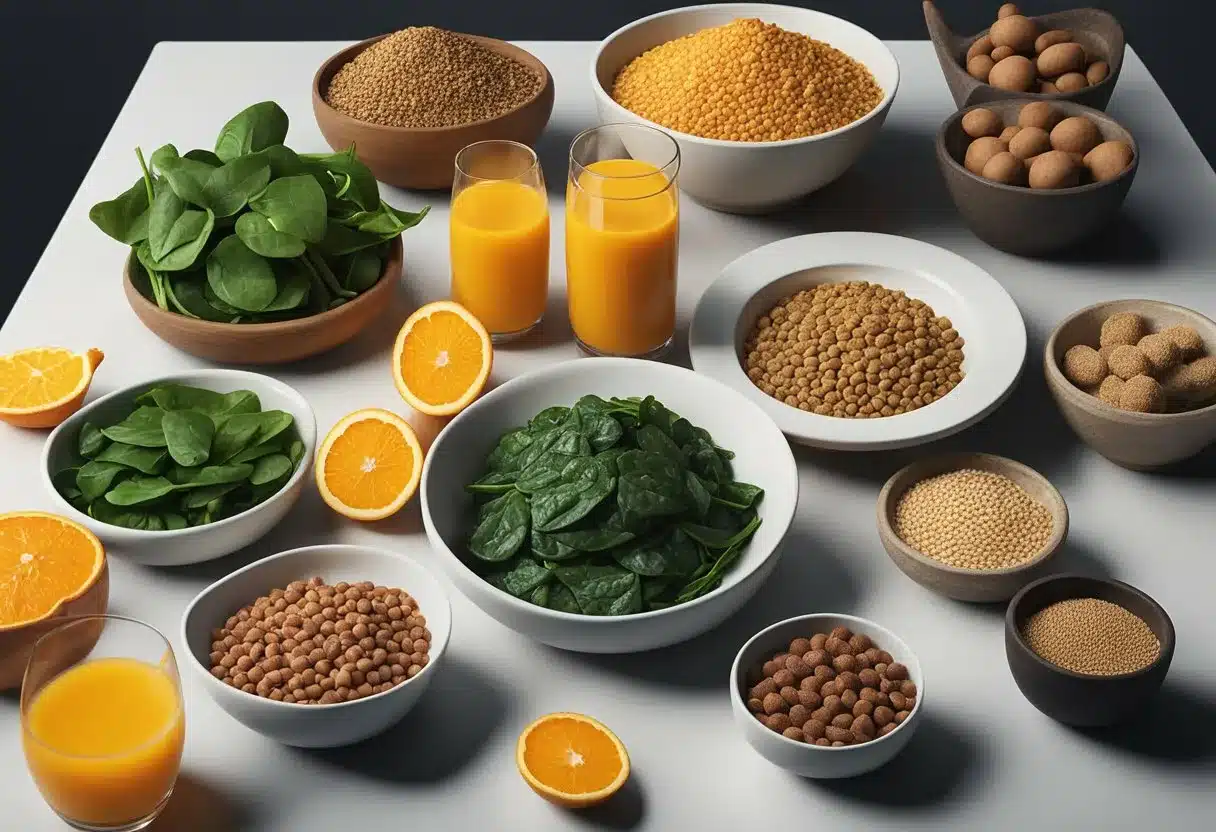
To enhance iron intake efficiently, focus on combining iron-rich foods with vitamin C, avoid certain iron blockers, and use specific cooking methods that maximize iron absorption.
Incorporating Vitamin C
Pairing iron-rich foods with those high in vitamin C can significantly improve iron absorption. Examples include adding citrus fruits, strawberries, peppers, or tomatoes to meals. Vitamin C helps convert non-heme iron, the type found in plant foods, into a form that is more easily absorbed by the body.
For instance, consuming a spinach salad with slices of orange or bell peppers can boost iron levels. Similarly, adding tomato sauce to beans or lentils can increase the iron that the body absorbs from these meals. Always look to include a source of vitamin C when eating plant-based iron sources.
Avoiding Iron Blockers
Certain foods and beverages can inhibit iron absorption and should be consumed away from iron-rich foods. Tea and coffee contain polyphenols that can block iron absorption. Additionally, calcium-rich foods and supplements compete with iron for absorption.
To maximize iron intake, avoid drinking tea or coffee with meals that include iron-rich foods. Instead, consume these beverages between meals. It’s also advisable to space out the intake of calcium supplements and high-calcium foods like dairy products from iron-rich meals to ensure better absorption.
Cooking Methods to Maximize Iron
How food is prepared can also impact iron levels. Cooking in cast iron cookware can increase the iron content of food. Acidic foods like tomato sauce cooked in a cast iron skillet absorb more iron from the cookware.
Soaking and sprouting beans, grains, and seeds can reduce phytates, which are compounds that bind iron and inhibit its absorption. This simple step can make more iron available. Lightly cooking vegetables like spinach can also decrease oxalates, another inhibitor, improving the bioavailability of iron.
Employing these methods in cooking can help enhance the iron content of meals, ensuring a better intake and absorption of this vital nutrient.
Recommended Dietary Practices
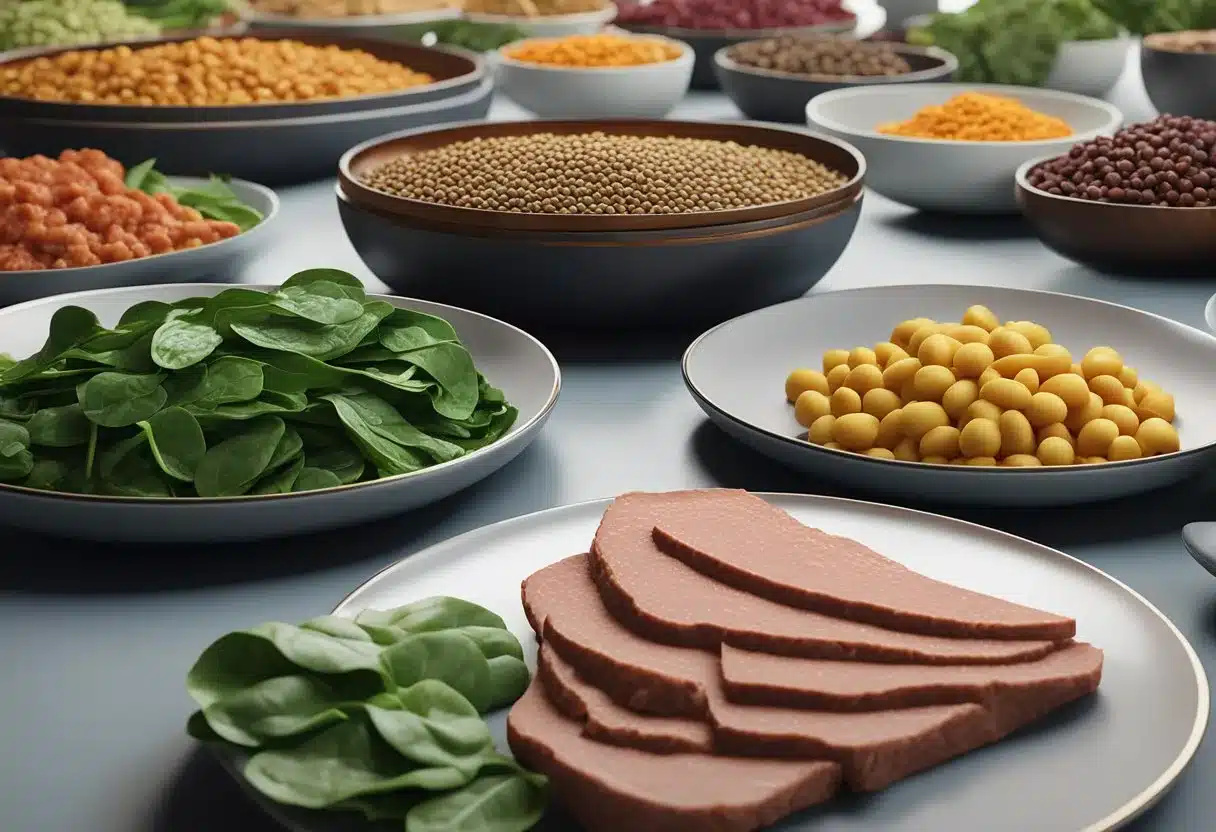
When aiming to increase iron intake, it’s important to balance it with other nutrients, follow specific dietary plans, and know when to seek medical advice. This ensures you get the full benefits without any complications.
Balancing Iron with Other Nutrients
Iron works best when combined with certain other nutrients. For example, pairing iron-rich foods like beans and spinach with foods high in vitamin C can boost absorption. Think about having a glass of orange juice with your meal.
Avoid eating calcium-rich foods like dairy at the same time because calcium can hinder iron absorption. Try to consume lean proteins like poultry and seafood that offer heme iron, which is easier for your body to absorb than non-heme iron found in plant-based foods.
Dietary Plans for Optimal Iron Intake
A balanced diet can help maximize iron intake. Include a variety of foods rich in both heme and non-heme iron. This means eating lean meats, fish, and fortified cereals. Also, add legumes and dark leafy greens to your meals.
Healthy snacks like nuts and seeds, along with dark chocolate, can provide additional iron. When planning meals, consider portion sizes and nutrient density. Aim to have at least one iron-rich food in each meal. If you’re vegetarian or vegan, include plenty of legumes, tofu, and iron-fortified cereals.
When to Consult a Healthcare Professional
You may need to talk to a doctor or dietitian if you’re having trouble meeting your iron needs through diet alone. This is especially important for people with health conditions that affect absorption, like celiac disease or inflammatory bowel diseases.
Pregnant women, young children, and those with anemia should seek personalized advice from a healthcare professional. Also, if you experience symptoms like extreme fatigue, weakness, or pale skin, a doctor can help diagnose and create a suitable treatment plan.
Special Considerations
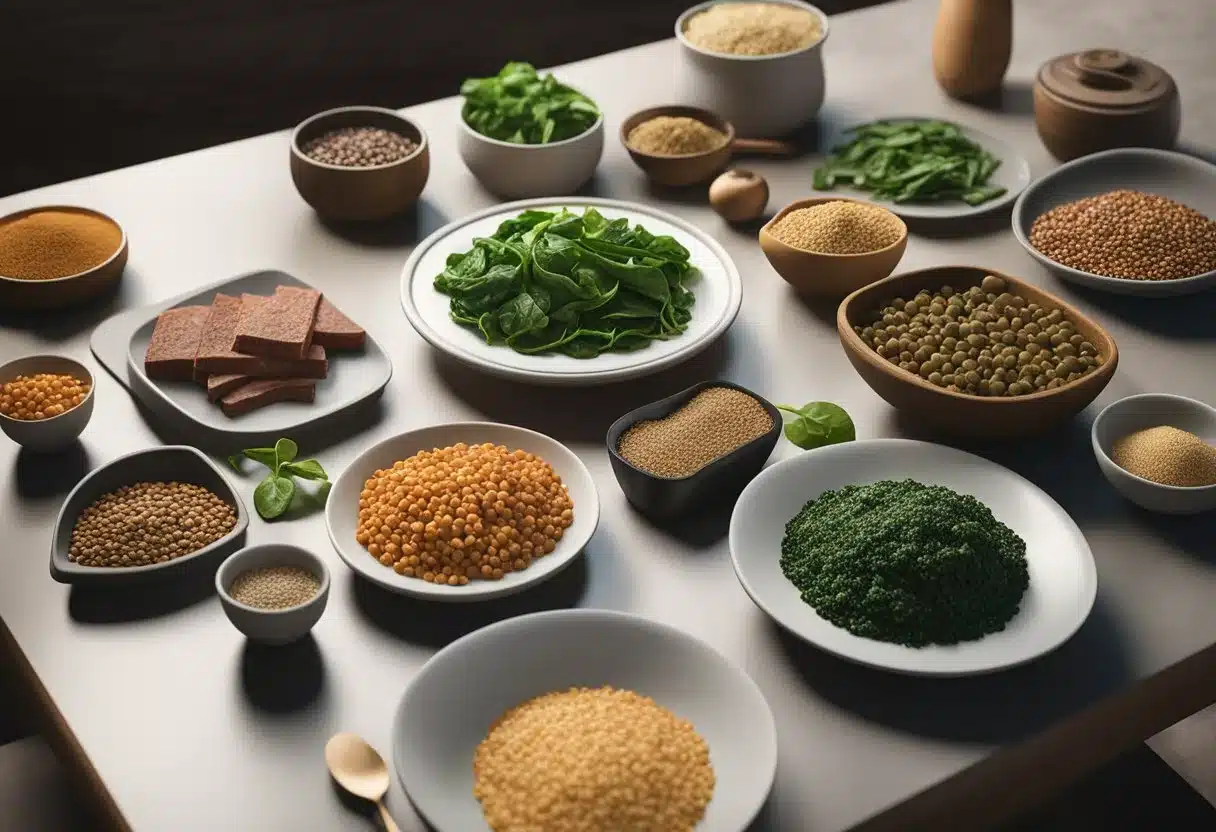
Iron needs vary based on age, sex, diet, and activity level. Specific attention should be given to different life stages, plant-based diets, and active individuals.
Iron Needs Across Different Life Stages
Iron requirements shift notably during various stages of life. Infants need more iron due to rapid growth, with breastfed infants possibly needing supplements. Pregnant women also require higher iron intake to support fetal development and compensate for increased blood volume. Likewise, breastfeeding women need extra iron to recover from childbirth.
Children and adolescents need sufficient iron for growth spurts. Adult men have stable needs, while women of childbearing age need more due to menstruation. Postmenopausal women typically need less iron than before.
Iron in Plant-Based Diets
Vegetarians and vegans must pay attention to iron intake because plant-based iron (non-heme iron) is less easily absorbed by the body than iron from animal sources (heme iron). Including vitamin C-rich foods like citrus fruits, tomatoes, and bell peppers can enhance iron absorption from plant-based foods.
Good sources of plant-based iron include lentils, beans, tofu, spinach, and fortified cereals. It is important for those on plant-based diets to monitor their iron levels and consider supplements if necessary. Iron absorption inhibitors such as phytates in grains and legumes should also be managed.
Implications for Athletes and Active Individuals
Athletes and active individuals often have higher iron needs due to increased red blood cell production and iron loss through sweat. Iron is crucial for energy production and muscular function, making it essential for maintaining performance levels.
Ensuring a diet rich in iron can help prevent fatigue and maintain high energy levels. They should include both heme and non-heme iron sources in their diet. Consulting a healthcare provider for personalized recommendations can be beneficial, especially for those engaged in intense training or competitions.
Adequate iron intake is particularly important for female athletes, who might be at higher risk of deficiency due to menstrual losses.
Frequently Asked Questions
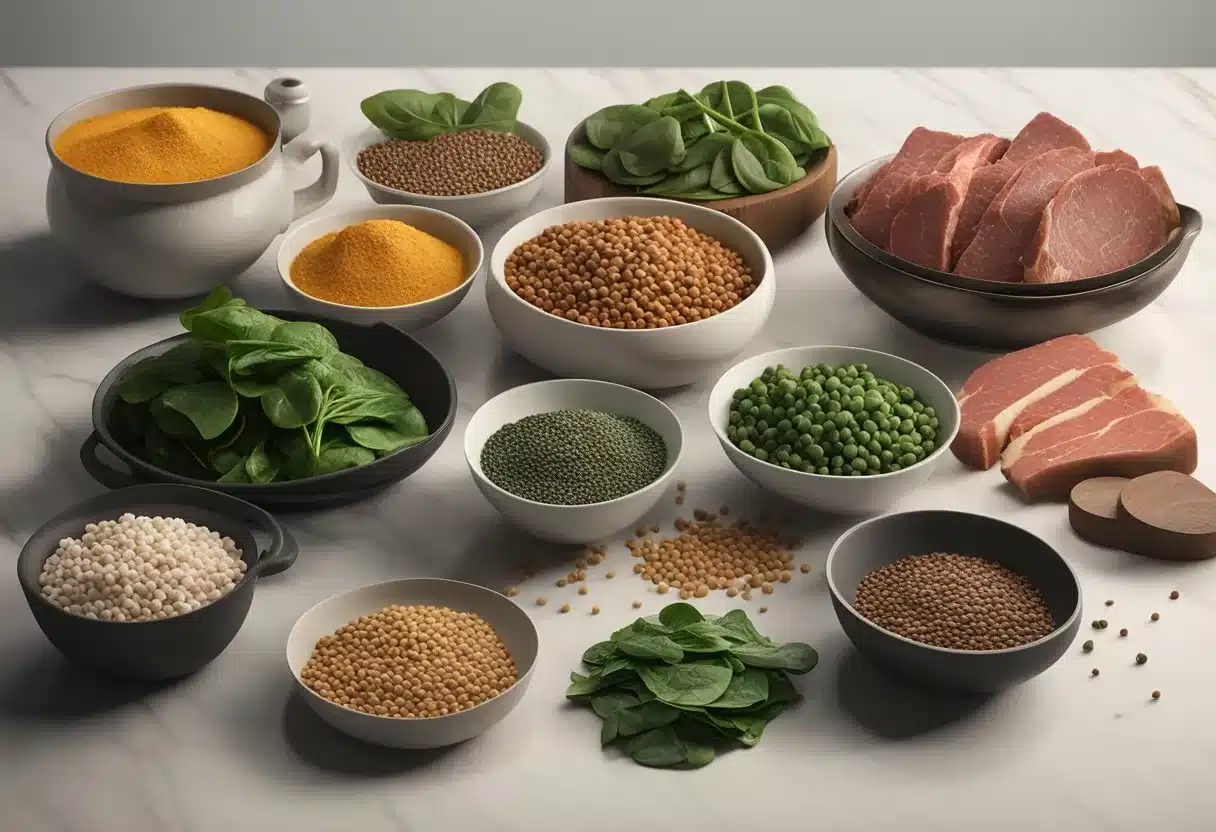
Iron plays a vital role in the body, especially when it comes to energy levels and overall health. Below are some common questions and answers about iron-rich foods.
What are some top vegetarian sources of iron?
Vegetarian sources of iron include dark leafy greens such as spinach and kale, quinoa, tofu, and beans. Some breakfast cereals are fortified with iron and offer a good boost as well.
What foods should women eat to increase their iron intake?
Women can benefit from consuming lean meats, seafood, beans, dark leafy greens, and fortified cereals. Chicken and fish are also excellent sources of iron. Eating foods rich in vitamin C alongside iron-rich foods can enhance iron absorption.
Which fruits are known to contain high levels of iron?
Fruits like dried apricots, raisins, and prunes are good sources of iron. These dried fruits offer a concentrated amount of nutrients and are easy to add to your diet.
What are some dietary options for raising iron levels quickly?
To raise iron levels quickly, include iron-rich foods like chicken, fish, lean meats, beans, and fortified cereals. Combining these with vitamin C-rich foods like oranges can help improve iron absorption in the body.
How can anemia be managed with iron-rich dietary choices?
Managing anemia involves eating a variety of iron-rich foods like lean meats, fish, beans, and dark leafy vegetables. Including these in your regular diet can help maintain adequate iron levels and manage symptoms of anemia effectively.
Can you recommend any drinks that are particularly high in iron?
Iron-rich drinks are less common, but smoothies made with spinach, kale, and fortified plant-based milks can provide good amounts of iron. Add fruits like prunes or dried apricots for an extra boost.